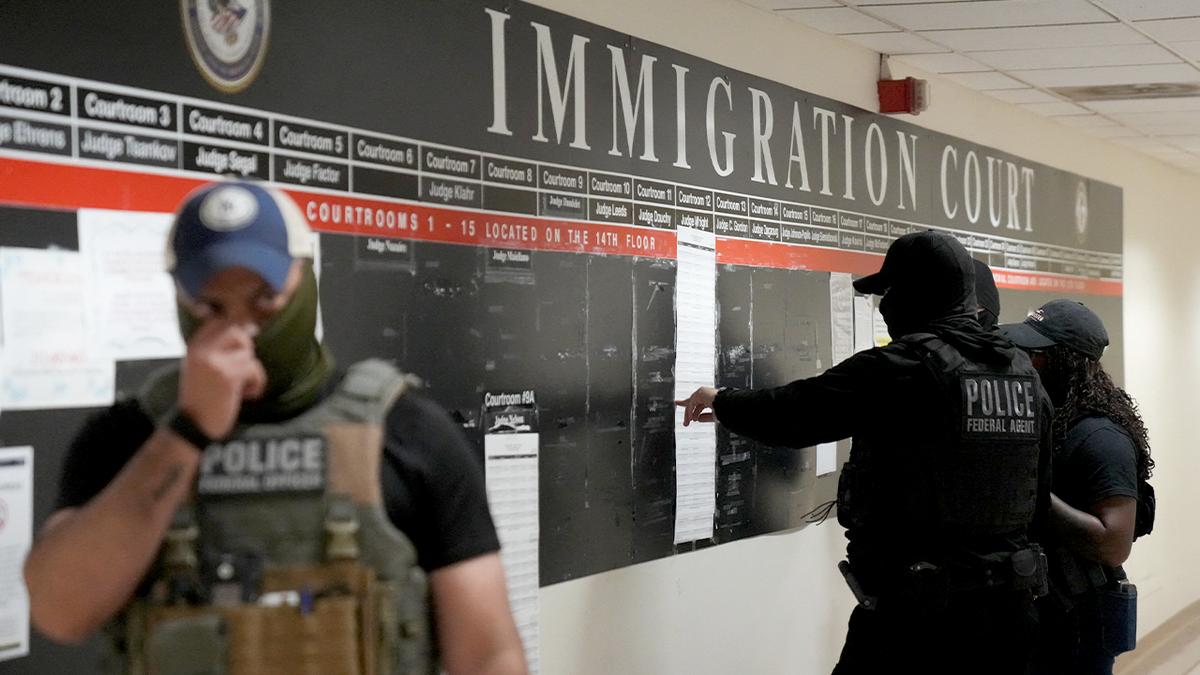
| Published July 3, 2025
Noem said the incident illustrates how former President Joe Biden ‘let the worst of the worst come in here’
In a revelation that has shocked officials and rattled the public, South Dakota Governor Kristi Noem has detailed one of the most grotesque incidents in recent immigration history: an illegal migrant, previously accused of cannibalism, allegedly attempted to eat his own flesh during a deportation flight out of the United States.
The man, whose identity has not been disclosed, was reportedly restrained mid-air after biting chunks from his own arms while being deported aboard a U.S. Immigration and Customs Enforcement (ICE) flight. The incident—confirmed by Governor Noem during a press conference and later reported by multiple outlets including Fox News, the New York Post, and ZeroHedge—has ignited fierce debate over the security risks tied to the ongoing immigration crisis.
“He tried to eat himself on the plane,” Governor Noem stated. “He was chewing on his arms, screaming. This is the type of individual our border policies are allowing into our country.”
The man had previously been arrested and detained for suspected cannibalism, though further details on those charges remain sealed. Sources suggest he may have entered the United States illegally through the southern border and had been flagged as a high-risk deportee due to violent behavior.
A Shocking Mid-Air Incident
According to flight crew accounts leaked anonymously, the man grew increasingly agitated once airborne. Shortly after takeoff, he allegedly began biting into his forearms with such intensity that blood was spilled in the cabin, prompting immediate emergency restraint by ICE agents on board. “It was like a horror movie,” one source said. “We’ve seen detainees panic before, but never anything like this.”
The flight was not redirected, but medical personnel met the aircraft upon landing to treat the man and assess his psychological condition. ICE has not commented publicly on the event, citing the detainee’s mental health and ongoing investigations.
Political Fallout
The gruesome case has become political dynamite. Noem, a strong voice in the national immigration debate and a potential contender for higher office, used the press conference to highlight what she described as the failure of federal authorities to vet and block individuals with extreme violent tendencies.
“This is what we’re dealing with—open borders letting monsters into our country,” she told reporters.
Critics, however, argue that sensationalizing the case risks stigmatizing all migrants and distracts from deeper policy reforms. Civil rights advocates have warned against allowing fringe cases to define immigration narratives.
Questions Left Unanswered
Many questions remain: How did someone with such an extreme psychological profile pass through the system undetected? Were international agencies aware of the man’s background? And how many other violent offenders are slipping through?
ICE has reportedly launched an internal review of protocols used to assess deportees before boarding, particularly for those flagged with psychological red flags.
A Wake-Up Call?
While some may dismiss the story as too bizarre to be true, it underscores a chilling reality: America’s immigration system is under strain, and not all those being processed pose routine risks.
Whether this case will result in new federal policy shifts remains uncertain. But for those on Flight 761, it was a harrowing reminder that border security isn’t just about walls or visas—it’s about who’s on the other side.

Left: Secretary of Homeland Security Kristi Noem testifies before the House Appropriations Homeland Security Subcommittee hearing on oversight of the Department of Homeland Security, on May 6. Right: US Immigration and Customs Enforcement (ICE) agents, along with other federal law enforcement agencies, attend a pre-enforcement meeting in Chicago, Illinois, on Sunday, Jan. 26, 2025. (Kevin Lamarque/Reuters; Christopher Dilts/Bloomberg via Getty Images)

US Immigration and Customs Enforcement (ICE) agents look over lists of names and their hearing times and locations inside the Federal Plaza courthouse before making arrests on June 27, 2025, in New York. (BRYAN R. SMITH/AFP via Getty Images)
Kristi Noem holding a flyer encouraging undocumented migrants to self-deport on July 1.AFP via Getty Images
People deported from the United States disembark a repatriation flight in Guatemala.via REUTERS
 Implications
Implications
1. National Security Concerns
This incident underscores a serious lapse in screening and detention protocols. The fact that an individual with a known history of violent, psychotic behavior could enter—and remain—in the country long enough to reach a deportation flight raises alarms about current national security practices.
2. Border Policy Under Scrutiny
Critics of the Biden administration’s immigration policies are using this case as a high-profile example of the dangers posed by what they see as a porous southern border. Officials like Gov. Kristi Noem argue this is a symptom of “open-border” policies that fail to vet migrants effectively.
3. Inadequate Mental Health Assessments
The event also highlights the lack of adequate psychological evaluation for deportees, especially those with violent or erratic behavior. ICE may need to implement stricter mental health protocols before placing high-risk individuals on flights.
4. Political Weaponization
This shocking case is quickly becoming a political talking point, especially in an election cycle. Figures on the right are leveraging it to demand stricter immigration controls, while opponents warn about generalizing or demonizing migrants based on extreme outliers.
5. Public Fear and Media Sensationalism
Stories like this inflame public fear, often going viral due to their bizarre and horrifying nature. While the event is real, the intense media framing may overshadow broader, more systemic issues in immigration enforcement and mental health care.
6. International Coordination Failures
If this individual had a violent record in his home country, why wasn’t this flagged or coordinated with U.S. authorities before or during his detention? The case raises questions about how well the U.S. cooperates with other nations in tracking high-risk individuals.
7. Legal and Ethical Issues
Restraining a mentally unstable person mid-flight, especially one exhibiting self-harm, puts ICE officers and medical ethics in a gray area. Was there sufficient protocol? Could this happen again? It could prompt lawsuits or calls for changes in detainee handling.

President Donald Trump, Florida Gov. Ron DeSantis and Secretary of Homeland Security Kristi Noem walk through a medical facility section as they tour a migrant detention center, dubbed “Alligator Alcatraz,” located at the site of the Dade-Collier Training and Transition Airport in Ochopee, Florida on July 1, 2025. (Getty)
People deported from the United States walk into a processing center at La Aurora International Airport in Guatemala City, Guatemala, June 26, 2025.via REUTERS
 Overall Takeaway:
Overall Takeaway:
The case of the illegal migrant who attempted to eat his own arms during a deportation flight is more than just a bizarre and grotesque headline—it’s a sobering symbol of deeper systemic failures. From weak border controls and inadequate mental health screening to the lack of international coordination and politicization of immigration policy, this incident exposes vulnerabilities in America’s ability to protect its citizens and uphold humane, secure enforcement standards.
As disturbing as the details are, the real danger lies not only in the individual but in a system that allowed him to slip through the cracks. For lawmakers, immigration authorities, and the public alike, this should serve as a wake-up call—urgently demanding reform, vigilance, and accountability.








Be the first to comment